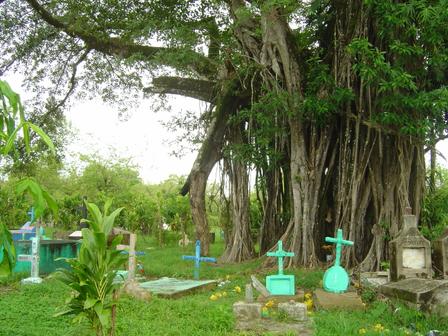Though the diagnosis is overwhelming for patients and families to receive, many childhood cancers have become “curable diseases.” At major U.S. centers like mine, the Dana Farber/Children’s Hospital Cancer Center, research efforts now largely focus on survivorship, refining risk stratification, minimizing treatment toxicity and developing more effective salvage therapies upon relapse.
But the situation globally is quite different. The technologic and resource gap between our centers and centers in the developing world is widening. Only a fraction of the children diagnosed with cancer around the world have access to therapy, either curative or palliative.
Treatment abandonment is another significant barrier to cancer care in the developing world. The reasons aren’t only economic, but are complex and multifactorial, including limited education, fatalism surrounding a cancer diagnosis, magical thinking, mistrust of the health care system, competing socioeconomic demands and fear of specific components of treatment (chemotherapy, IVs, radical surgeries, radiation).
In the developed world, treatment abandonment or refusal is rare, studied case-by-case, and even considered criminal (as in this recent case involving a child with autism). It’s not usually considered when analyzing cancer outcomes. In the developing world, treatment abandonment is often the primary adverse outcome — 50 to 60 percent of children have their treatment stopped or not started at all.
Our Pediatric Oncology Global Outreach Program at DF/CHCC, led by Carlos Rodriguez-Galindo, is collaborating with the Central American Association of Pediatric Hematologists and Oncologists (AHOPCA) to identify barriers to care in the treatment of pediatric sarcomas and other solid tumors. We have observed that as many of 27 percent of patients with osteosarcoma in Central America abandon treatment, the majority in the first three months after diagnosis, even as treatment abandonment for leukemia has decreased to less than 6 percent in the region.
Why the difference? It remains unclear. However, we know that amputation is the primary modality for local control of primary bone tumors of the extremity, and we believe that fear of amputation is a driver of treatment abandonment in osteosarcoma.
At a recent weekly web-conference with AHOPCA, for example, we reviewed the case of a young adolescent with non-metastatic osteosarcoma of the distal femur. The regional protocol, which includes amputation and a four-drug regimen, carries an event-free survival of 50 percent at three years if completed as directed, not far from outcomes reported in developed nations (before subdividing by histologic response to therapy). However, when the parents heard the details of cancer diagnosis and treatment, they refused to complete the staging studies and refused treatment. The team, including skilled psychologists and oncologists, worked hard to convince the parents, but couldn’t change their minds.
Cases like this are very distressing, as we know that untreated osteosarcoma is fatal. We have observed in pediatric sarcoma that only 1 in 5 children who abandoned therapy were eventually brought back for medical care, and fewer than 10 percent of those who returned remained curable.
Until now, little was published on treatment abandonment and there was no consistent way to account it in cancer statistics. Filling this gap is the main purpose of a position statement from the SIOP PODC Working Group, to which I belong, recently published in The Lancet Oncology. The statement calls for more attention to treatment abandonment, provides a clear definition (four weeks of missed therapy, not including transitions to palliative care), and highlights the need to measure treatment abandonment and present it as part of cancer statistics in the developing world. We hope that this statement will ultimately foster a better understanding of the problem and how to address it.
There is much to do to bridge the survival gap in pediatric cancer between the developed and developing world. Finding successful strategies to deal with treatment abandonment, and identifying groups of patients for whom they do and don’t work, is crucial. Our Pediatric Oncology Global Outreach Program hopes to advance this field through collaborative research with our Central American colleagues. If you’d like to help, visit our fundraiser.
Paola Friedrich, MD, is a third-year Pediatric Hematology Oncology Fellow at Dana Farber/Children’s Hospital Cancer Center. She is an active member of the Pediatric Oncology Global Outreach Program and the SIOP PODC Treatment Abandonment Working Group.







